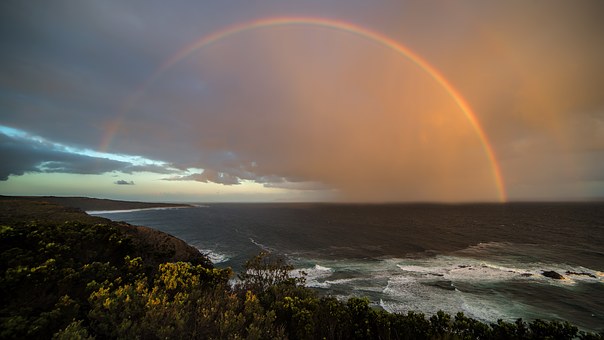Bob Trubshaw
We are all familiar with the phrase ‘dead straight’. Paul Devereux [1] has argued persuasively that at least some ‘leys’ are ‘corpse ways’ and identified a number of clear examples of ‘dead straight’ burial paths in various parts of northern Europe, with related examples from north and south America, the far east and elsewhere. These examples are, almost exclusively, medieval in date.
Academic archaeologists are also recognising that way back in the neolithic various funerary monuments are accurately aligned, sometimes with the linear earthworks known as ‘cursuses’. But why should straightness be linked to death?
In various mythologies from around the world, the ‘Otherworld’ is depicted as being exactly the opposite of life on Earth. Daytime here is night-time there, and other such dualisms. This, I consider, is the significant clue. Try to put yourself into a pre-technological society. Exact straight lines are so rare as probably to be non-existent. Try to think of any natural forms which are exactly straight. One which is persuasive is rays of sunlight bursting from behind a cloud – a transient and itself almost Otherworldy experience. Furthermore, in the neolithic mind the sun and death were closely linked. Even if this seems an unusual association to the modern mind, Aubrey Burl’s work on archaeoastronomy convincingly demonstrates such links, of which the famous shaft of light on the midwinter sunrise at Newgrange is an early and dramatic example.
Other examples of straightness in early societies seem only to be based on man-made artifacts – a thin thread drawn tight, the flight of an arrow or the shaft of a spear. But each of these has Otherworldy overtones [2]. The Three Fates – or the Norns, or Wyrd – measure the span of a human life in thread which is then cut off. The supernatural flight of an arrow arises in various legends – where the landing place becomes, say, the site of a grave, as with Robin Hood. In anthropological literature, shamanic-style healing rituals also involve arrows. And a spear – even a simple shaft with a fire-hardened wooden tip – is also a weapon which would be most commonly used for dispatching hunted animals, or human adversaries in battle, to the Otherworld. Indeed, the spear was the very symbol of manhood; the Old English word for a free man translates as ‘spearhand’.
The living world, indeed mankind’s world before machinery, is made up of curves. In any worldview where the Otherworld is the contrary of this world, then straightness would be inherently Otherworldy. Almost inevitably, travelling to the Otherworlds – either after death or during ‘shamanic’ experiences – would be in a straight line.
Apart from the practical reason that a straight line is the shortest distance, we can see that the Roman predilection for creating a network of straight paved roads would also have ‘spiritual overtones’ which we are now blind to. Seeing cohorts of strangely-dressed soldiers, speaking a strange language, walking along straight roads, would have ‘Otherworldly’ connotations, just in the same way that the arrival of the Spanish explorer Cortez fitted in with indigenous beliefs about the appearance of their gods.
Likewise, over 500 years after the Roman roads were abandoned by their makers, they were known as the ‘Royal roads’ and anyone travelling on them had the protection of the king. With just a little supposition, it would seem that in pre-Conquest England it was important for the king to be seen to be travelling in straight lines as he made peripatetic progress around his kingdom. We even retain some of this notion with Pall Mall aligning impressively on Buckingham Palace – the Trooping of the Colour is perhaps not that remote from ley hunting!
And we have ignored the fact that many of the so-called ‘Roman roads’ were superimposed on well-established trackways. While these may have not have been as narrowly defined, or as uncompromisingly straight, as the Roman engineer’s versions, we can be sure that anyone travelling along them had a distinct impression of progressing in a straight manner. However, no evidence exists to suggest that the Druids or their forebears regarded such routes as ritually significantly and caution must be exercised when making such an attractive extrapolation.
The idea of straightness as Otherworldly is strongly supported by the folklore of labyrinths, which are frequently run in order to trap evil spirits (who, it is confidently stated, can only travel in straight lines). The R saring ‘dead road’ at Uppland, Sweden ends at burial mounds and a labyrinth. Speculatively, could the labyrinthine patterns carved outside neolithic chamber tombs such as Newgrange and Bryn Celli Ddu also serve a similar function? Certainly, scrambled threads were a common content for witch bottles buried (until recent times) with the intention of trapping ill-doing spirits.
The idea of the Otherworld being diametrically opposed to normal life seems to recur ‘spontaneously’ in unconnected cultures around the world. Similarly the dualism between straightness/death/evil-spirts and curvilinearity/life-spirit seems to arise equally naturally. Is it any surprise that the conjoining of the two can be recognised in cultures from the neolithic to the medieval?
References
1: See Paul Devereux, Shamanism and the mystery lines, Quantum, 1992 for details.
2: ibid.
Originally published in Mercian Mysteries No.20 August 1994.

